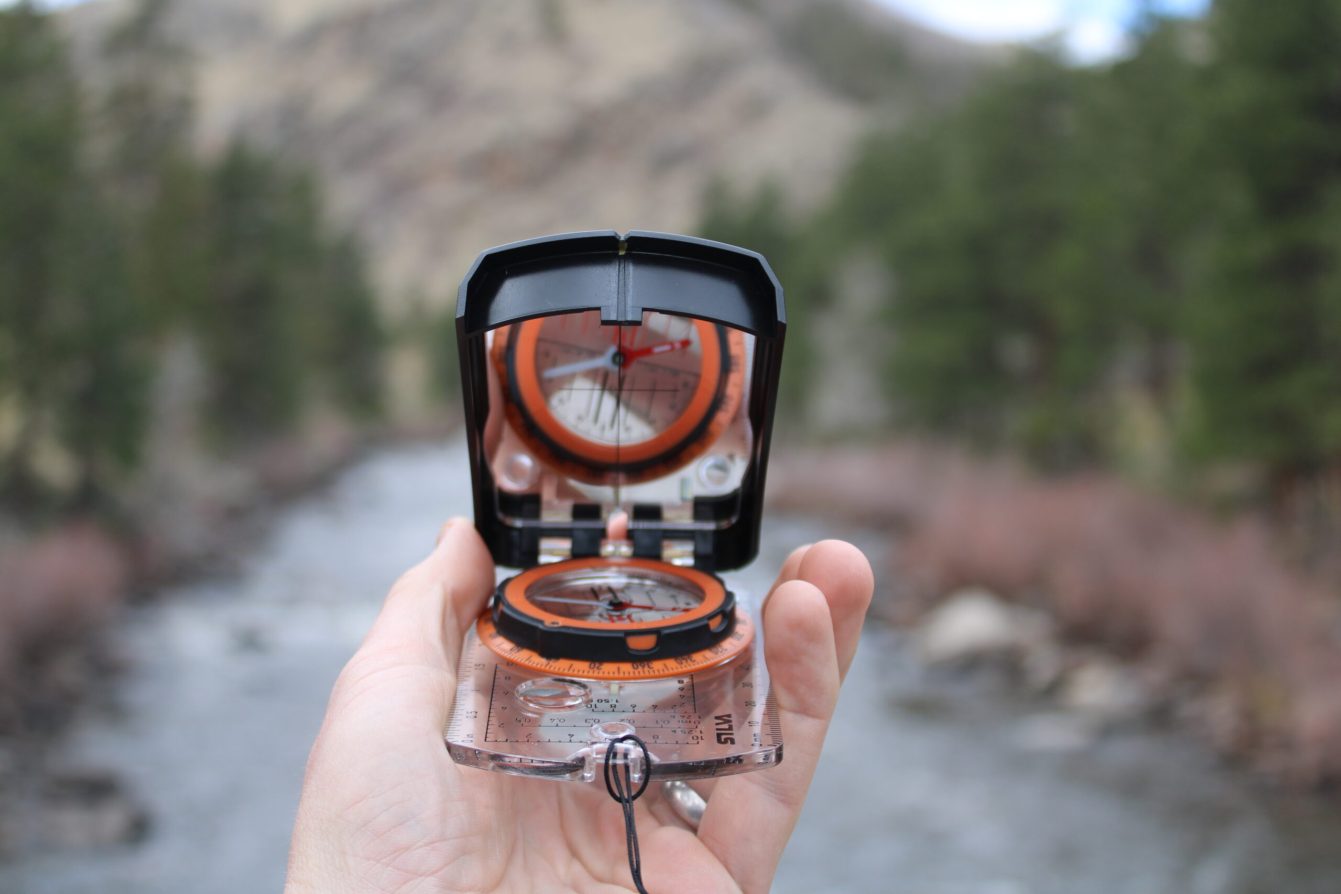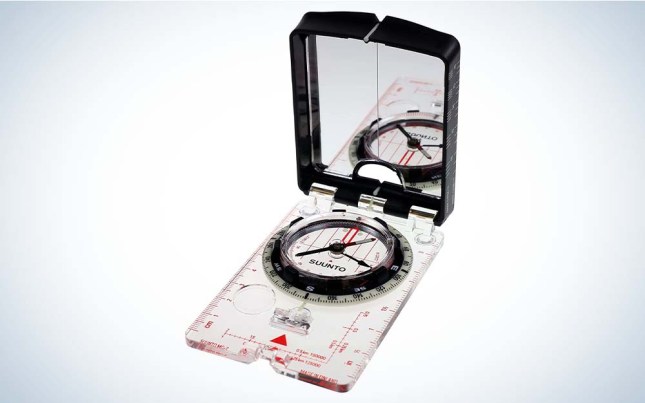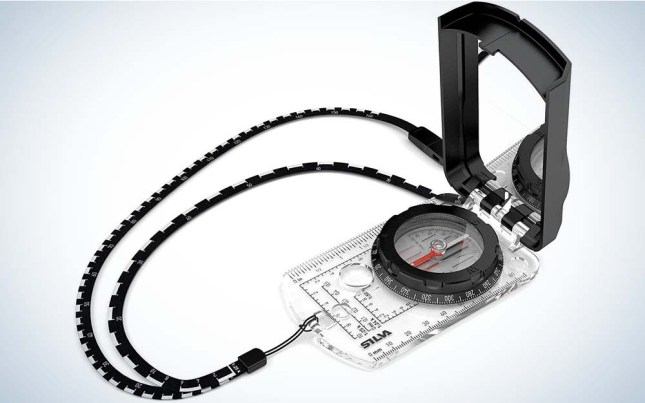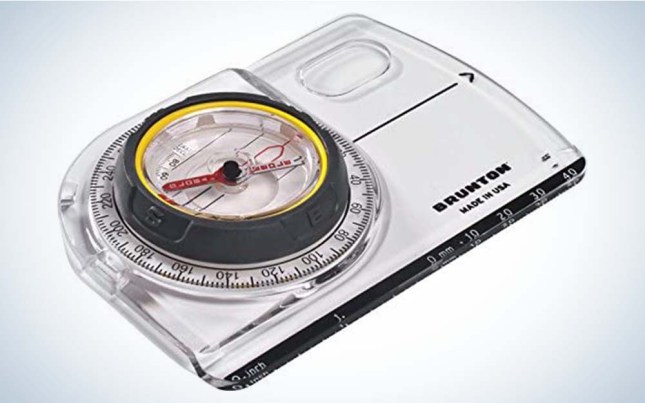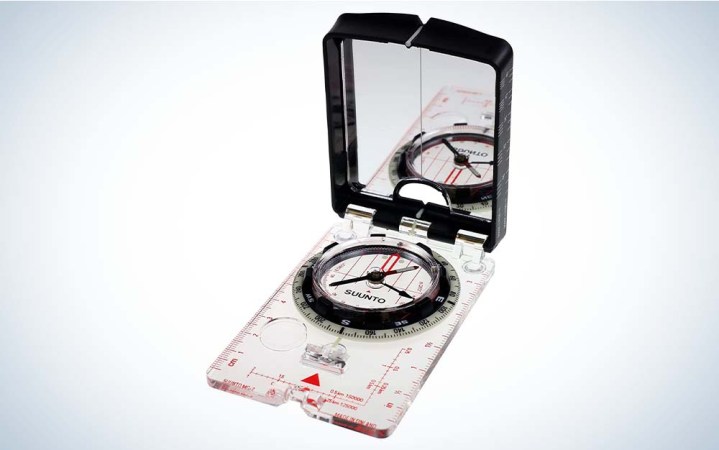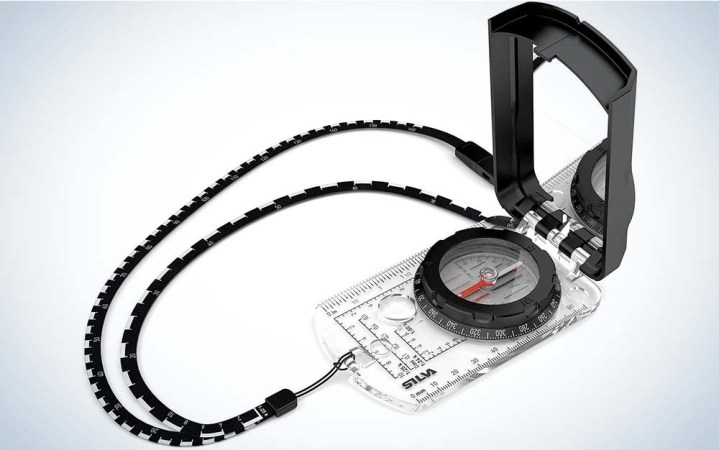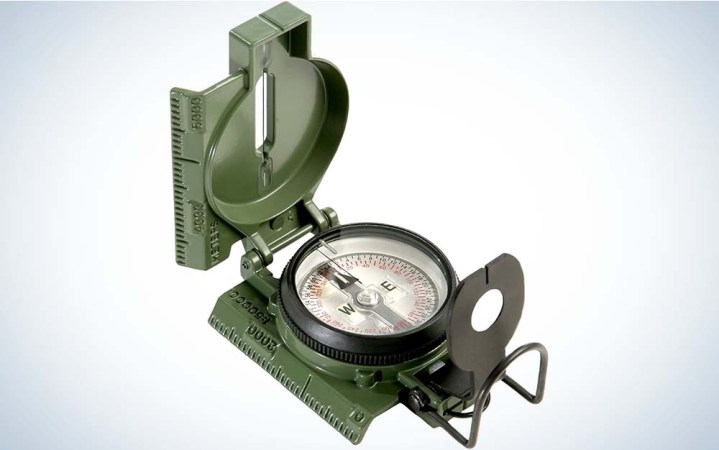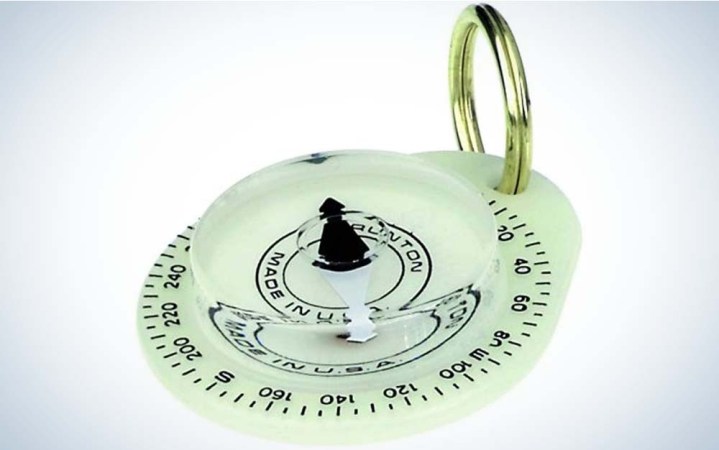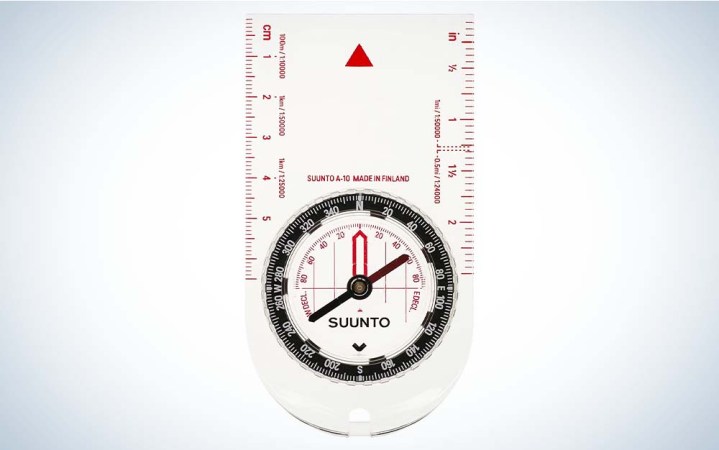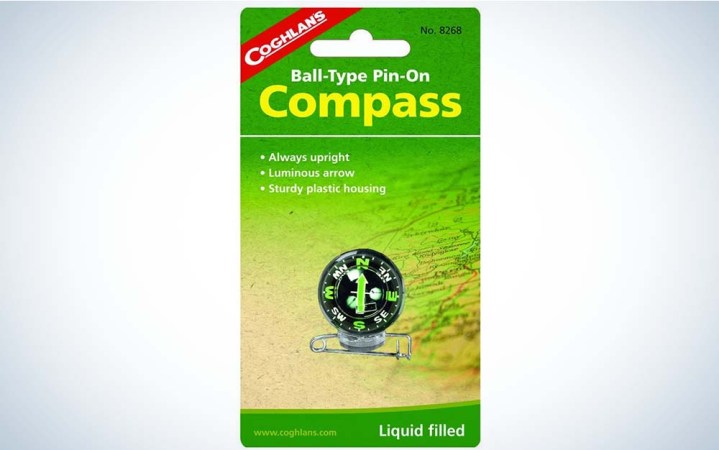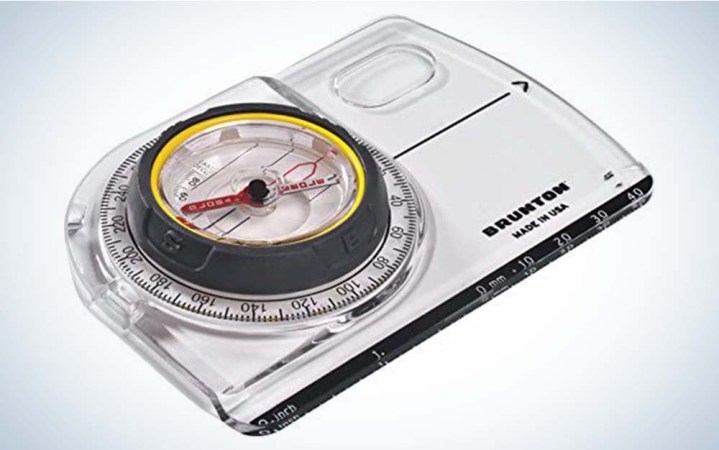We may earn revenue from the products available on this page and participate in affiliate programs. Learn More ›
Even with an endless list of navigational apps and gadgets, it’s best to be prepared with an old school compass. After all, apps can crash, phone batteries die, and service can get lost in remote areas. There is simply no substitute for being prepared by bringing a map and compass. While compasses are an essential piece of gear for anyone going into the backcountry for safety reasons, they also play a significant role in route planning. They also add an added level of challenging fun to a long hike.
Compasses come in a variety of styles and features. To help you pick the right compass, I tested the best compasses to evaluate their features, strengths, and weaknesses.
- Best Overall: Suunto MC-2
- Best for Hiking: Silva Ranger 2.0
- Best Military: Cammenga Military Compass
- Best for Kids: Brunton 9041 Glow Compass
- Best Land Nav: Suunto A-10
- Best Pin-On: Coghlan’s Ball-Type Pin-on Compass
- Best Budget: Brunton TruArc 5
How I Picked The Best Compasses
To properly review these different compasses, I researched additional mapping and navigation skills to get the most out of each tool. I took several into the Colorado backcountry using compasses and maps to navigate in different terrains. I also used the compasses to try and make my way to nearby bodies of water like creeks.
Best Compasses: Reviews & Recommendations
Best Overall: Suunto MC-2
Key Features
- Mirror compass with a clear baseplate to use on maps, as well
- Slope measurements tool on the side of the case
- Declination tool included for adjusting east and west
- Sighting hole and notch for accurate bearings
- Luminescent markings for working in low light
- Baseplate has magnifying lens
- Weight: 0.25 pounds
Pros
- Complete package
- Multiple tools allow for trip planning and backcountry navigation
- Easy to use slope indicator makes this a great compass for winter sports
Cons
- On the pricier side
- Can seem overwhelming to someone new at using a compass
The Suunto MC-2 is one of the most popular devices in the compass industry, and for a good reason. With a wide range of tools and uses, this all-in-one compass works for any need and any level of navigational skill. While on the pricier side, this should be the only compass you need to do it all. The MC-2 is also fairly simple for newcomers, from setting a declination to using the slopes to map out where avalanche dangers may exist and other issues.
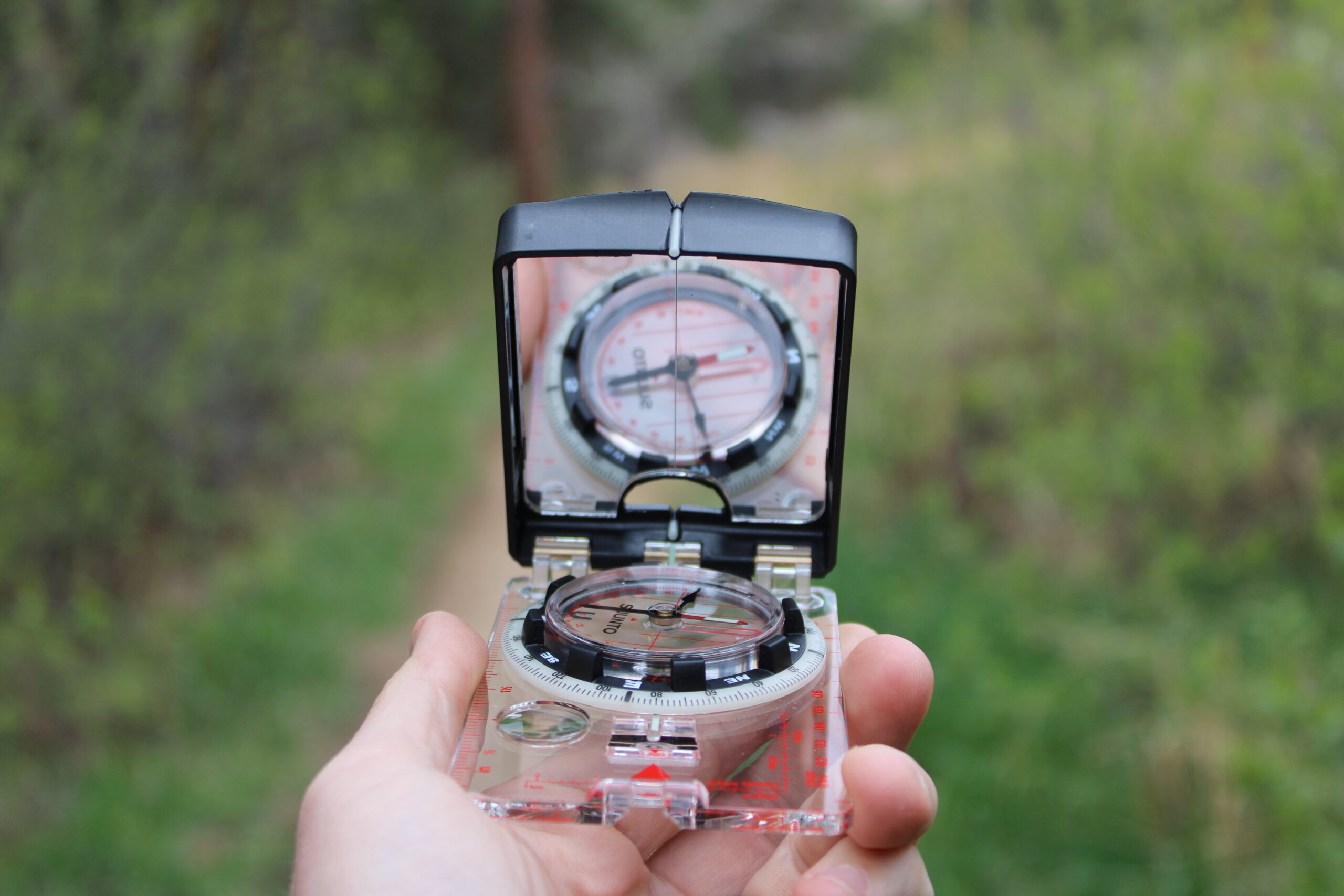
On trail, it was easy to set my declination and hike a few miles into Roosevelt National Forest. I used the MC-2 near Greyrock in Northern Colorado and was able to follow a section of trail past the popular destination that is Greyrock to avoid some crowds and then easily find my way back.
The base model is designed for the Northern Hemisphere, but you can also upgrade to a global version for an extra $15. With a long list of capabilities, I would suggest any user at the very least read articles on compass usage or watch some YouTube videos to get the most out of this tool.
Best for Hiking: Silva Ranger 2.0
Key Features
- Weight: 0.3 pounds
- Contour card to measure slopes and avalanche risk
- Built in adjuster for magnetic declination based on location
- Mirror sighting with sighting hole for determining direction over long distances
- Magnifying lens
- Lanyard has distance markers
Pros
- Great value for a fairly complete package
- Ease of use with a bold font for many indicators
- Easy to attach a lanyard
- Similar to the MC-2 but half the price
Cons
- Has slightly fewer features than the MC-2
- Heavier for anyone counting each tenth of a pound
- Slope measurements in a separate card
The Silva Ranger 2.0 is very similar to the best compass overall, the MC-2, so it’s hard to review it without drawing comparisons. While the Silva Ranger 2.0 does weigh a small amount more than the Suunto MC-2, you get a lot of tools with this compass, like a similar case and mirror. However, unlike the MC-2, the Ranger doesn’t come with a slope indicator directly on the device or a key to change settings.
Using the Ranger on trail felt very similar to the MC-2 as well and, in many ways, just as reliable. The clear base plate allowed me to do some extra navigating before arriving in Rocky Mountain National Park to get an idea of what was ahead. With just a few minor differences, like the use of a card for slope measurements that come in the box, the Ranger was very reliable.
Overall, the Ranger 2.0 is a great option for someone slightly more on a budget but looking for a lot of the quality of the industry’s standard.
Best Military: Cammenga Military Compass
Key Features
- Hard metal shell keeps it safe
- Used by the U.S. Military
- Seven Tritium micro-lights, providing continuous illumination for over 12 years
- Accuracy +/- 40 mils.
- Works in temperatures from -50° to 150°
- Weight: 1 pound
Pros
- Extremely durable
- Very simplistic and easy to use
- Battle-tested
- Comes with added protection with a case
- Uses accurate lensatic technology
Cons
- Maybe trickier to use for mapping
- At one pound, it can be considered fairly heavy for anyone concerned with their base weight
- One of the more expensive options
Cammenga’s Military Compass remains the official compass manufacturer for the U.S. military. This metal wrapped compass allows for simple directional help and orientation. While this is probably not the number one choice for mapping, it does come with a scale to help measure distances on maps.
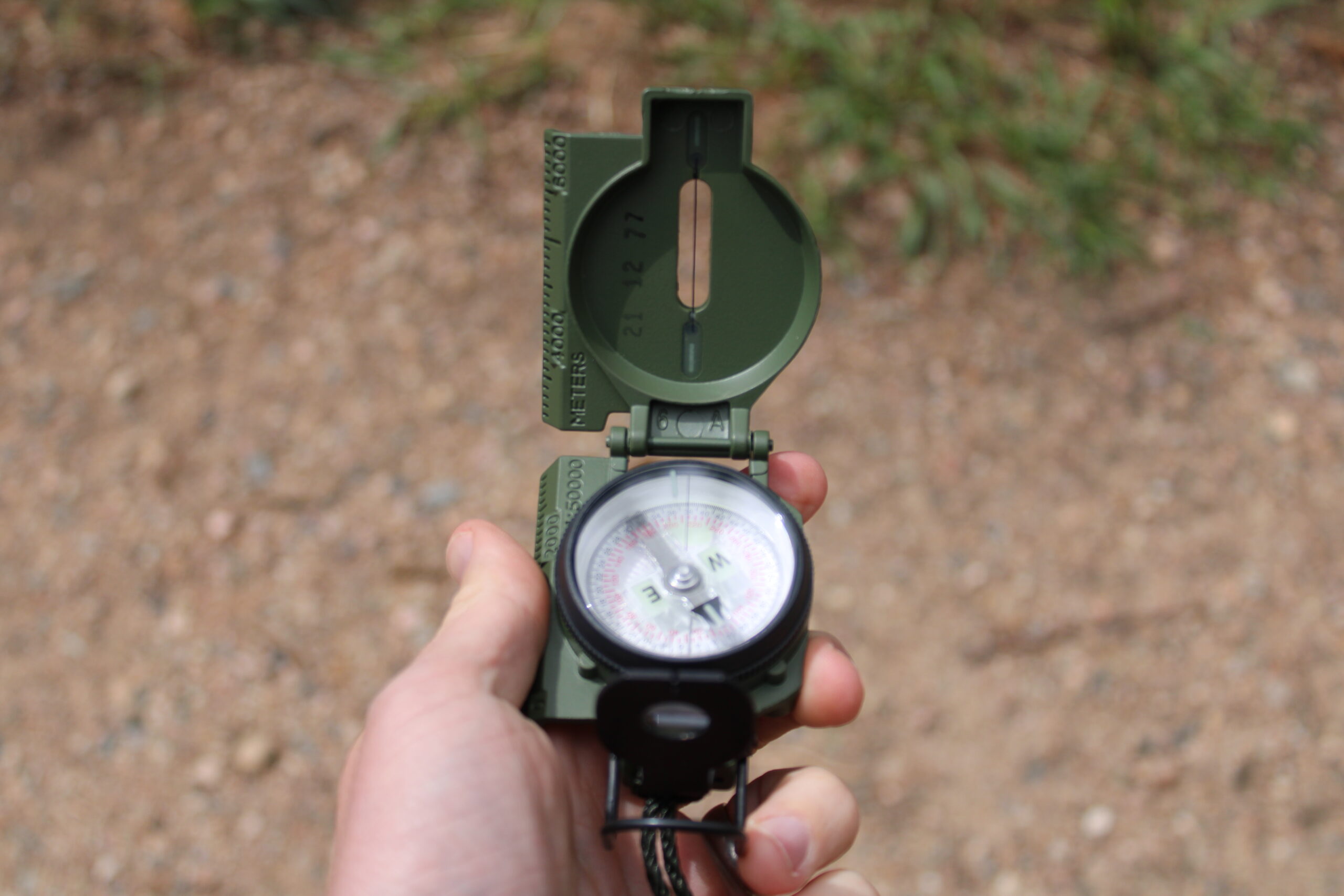
This compass has been battle-tested, works in a vast range of temperatures, and is water and sand-proof. I figured with such a strong design, it wouldn’t hurt to throw it down a few rock slopes just to see how it fared, and honestly, it didn’t get a scratch. I would be afraid to drop many of the other compasses due to their plastic cases.
The compass comes in a canvas bag for even more added protection, and with a forest green color, this is an excellent device for hunters.
Best for Kids: Brunton 9041 Glow Compass
Key Features
- Glows in the dark
- Key ring attachment
- Weight: 0.02 pounds
Pros
- Very affordable
- Easy to understand for just about any user including kids
- Glows in the dark for added safety if needed at night
Cons
- The lack of features makes it more of a life-saving device than a route finder
The Brunton 9041 Glow Compass is a great addition to have in the car or at the bottom or a backpack for when you need it. The added fact it glows in the dark makes it even more useful for anyone who could get turned around in the dark.
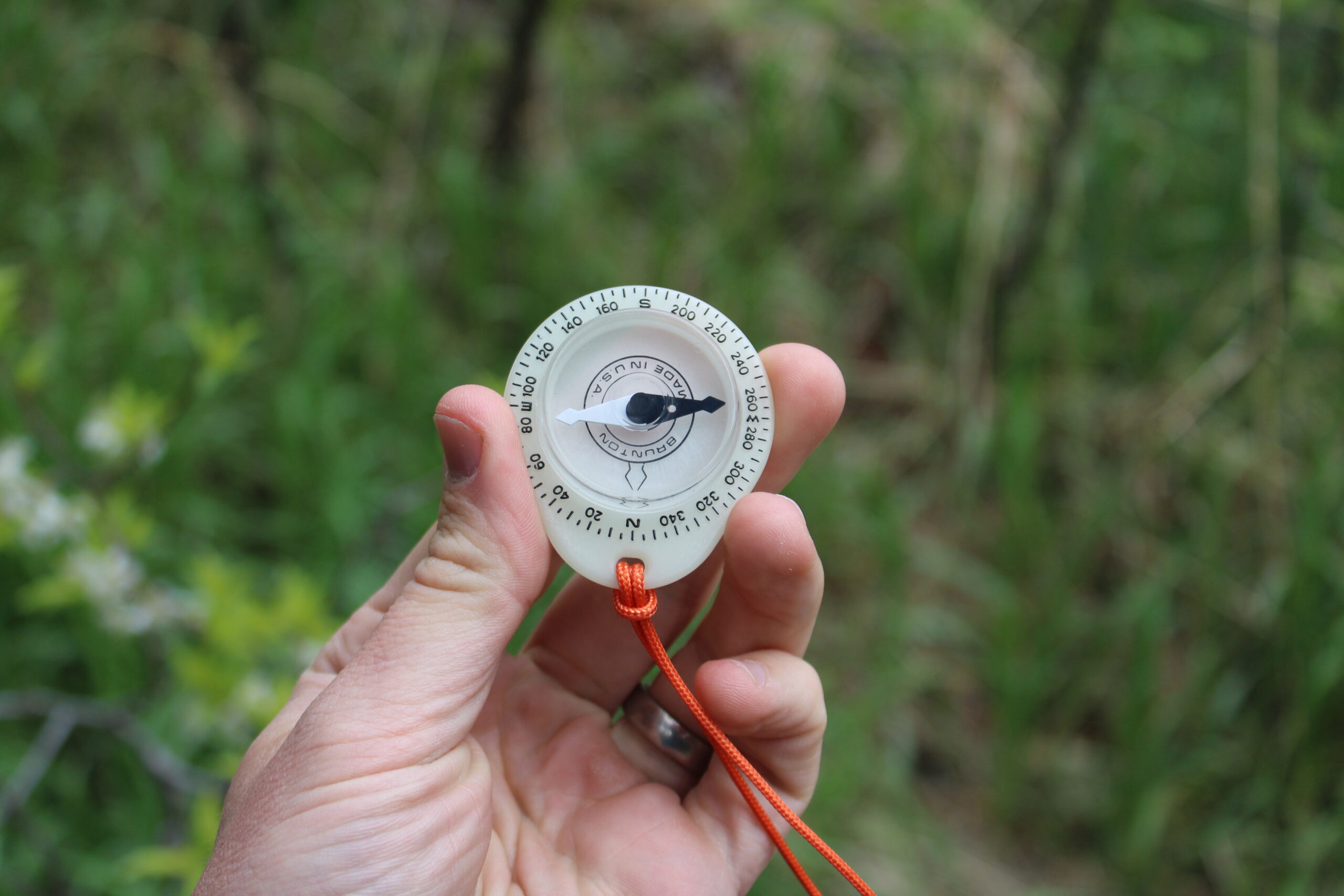
The low price and ease of use are also great for teaching the basics of navigation to kids. With a small lanyard, it’s also great to clip on a belt or the bottom of a pack. However, with the ease of use comes also the lack of being able to use this for route finding or mapping out new adventures. Also, while it does glow in the dark, it’s probably not bright enough to be used as a way to signal a rescue.
Best Simple: Suunto A-10
Key Features
- Fixed declination
- Clear baseplate
- No clinometer
- Scale
- Weighs around 0.07 pounds
Pros
- Easy to use
- Great for simple navigation
- Popular option for mapping
Cons
- Does not have all the capabilities some mirror compasses have
- Seemed a little less accurate when setting orientation and took multiple tries
The Suunto MC-2 is the industry standard for backcountry guides, but the A-10 is one of the most popular tools for mapping. A fraction of the price, this is a great tool to find new routes and plan ahead before heading into the field. It’s also a good option for anyone a little newer to using a compass and staying a little closer to civilization. It is a great option for basic use, whether that’s figuring out a route or getting your bearings in the woods. This baseplate compass is an affordable and lightweight option that will get the job done for the majority of users.
As a big map fan, I decided to put this to the test by pulling out some National Geographic brand maps and furthering my navigation skills with some help from instructional videos. The A-10 was a great tool and was even the compass used in some videos. As mentioned earlier, while it’s a great basic compass, it does lack some of the added tools of pricier options. It also did not seem as reliable.
Best Clip-On: Coghlan’s Ball-Type Pin-On Compass
Key Features
- Pin-on compass
- Luminous directional arrow
- Weight: 0.02 pounds
Pros
- Very affordable leaving little excuse to not carry one
- Lightweight and small enough to put anywhere
Cons
- Couldn’t use for mapping or other more in-depth navigation needs
A longtime classic aimed at simplicity, this pin-on compass is designed to go wherever you are. The close pin can easily be stuck on a backpack for the added insurance of having a compass with you without adding weight or much thought of all. The Coghlan’s ball-type pin-on compass could not be any simpler. With a floating ball constantly facing north, the added pin allows users to put this on a bag or in a vehicle and forget about it until it’s needed. With this level of minimalism, it’s hard for anything to go wrong with the one job this compass is focused on doing.
Due to the pure simplicity, the best way to test the spinning globe compass was to connect it to my shoulder strap in a hiking pack. I was able to eye the compass and keep a close eye on the direction I was heading.
At the same time, this is probably best as a complement to another more elaborate compass that can help you find locations, retrace your steps and figure out new trails and sources of water.
Best Budget: Brunton TruArc 5
Key Features
- Magnifier
- Works in both northern and southern hemisphere
- Toolless declination adjustment
- Large font
- Weighs 0.11 pounds
Pros
- Very direct with indicators
- Global compass so it can be used in both the Northern and Southern Hemispheres
Cons
- The needle does seem to stick occasionally
- Lacks additional navigation tools
Like the Suunto A-10, this Brunton compass is a baseplate compass made mostly for mapping. The simple design also makes it a great compass to learn mapping on as it’s straightforward. Due to the similarities, I also tested the TruArc 5 as I did with the A-10 by learning additional skills to use while in the backcountry.
Brunton, a Wyoming-based company, also designed this to work globally, meaning it will be in the Northern and Southern Hemispheres, so you can use this compass wherever your journey brings you. While trying to orient, I noticed the arrow occasionally sticks and is not as responsive as some other brands.
How to Choose the Best Compass
With dozens of variations and a huge range of prices, figuring out the best compass for you can be a little tricky, if not overwhelming.
There are many things to consider, such as where you are using the compass, how far off-grid you plan on going, and understanding your skill level to make the most of your purchase. With an endless list of best GPS units, many will look for a compass as a backup or an instrument to use in an emergency. But, a compass can be the primary navigational aid and a GPS can be a back up.

Before you can choose the best compass, you’ll need to understand the features compasses can have. Here are important features to know:
Declination adjustment: Declination is the difference between true north and magnetic north. Declination varies depending on your location and maps will note the necessary declination adjustment needed. Adjustable declination allows you to adjust your compass to make route finding faster and easier.
Sighting mirror: Helps you shoot an accurate azimuth to distant landmarks.
Clinometer: Measures the steepness of a slope. This feature can help assess avalanche hazards.
Global needle: If you hop between the northern and southern hemisphere a global needle is a great feature to have.
Rotating bezel: The bezel is used for taking bearings and is marked from 0 to 360 degrees.
Baseplate: This flat transparent base has a ruler to measure map distances and can also include a magnifying glass.
It’s also important to do some research and learn the basic skill sets needed to get the full potential from your compass.
FAQs
This depends on what you’re looking for. A basic navigation tool starts at under $10. Next is up are baseplate compasses used for mapping and navigation, coming in around $20 to $40. Finally, mirror compasses, which often also have a baseplate, can cost $40 to above $100.
Compasses on the higher end are more likely to be accurate. Plus, compasses like the Suunto MC-2 that have a way to change your declination only add accuracy for users that know how to properly work it. Be sure to buy a compass that is either global or designed to work in your region of the world.
For the most part, the ones I tested were more or less accurate in pointing north. However, you do get what you pay for, and some are less responsive or could be a few degrees off. Also, remember to keep metal away as it will disorient your compass.
In short, yes. If for nothing else than added peace of mind, compasses provide extra security to those hiking to find their way back to a trail or your car. There are plenty of basic cheap options that many longtime wilderness guides carry at the very least, as you cannot always rely on newer electronics.
Final Thoughts
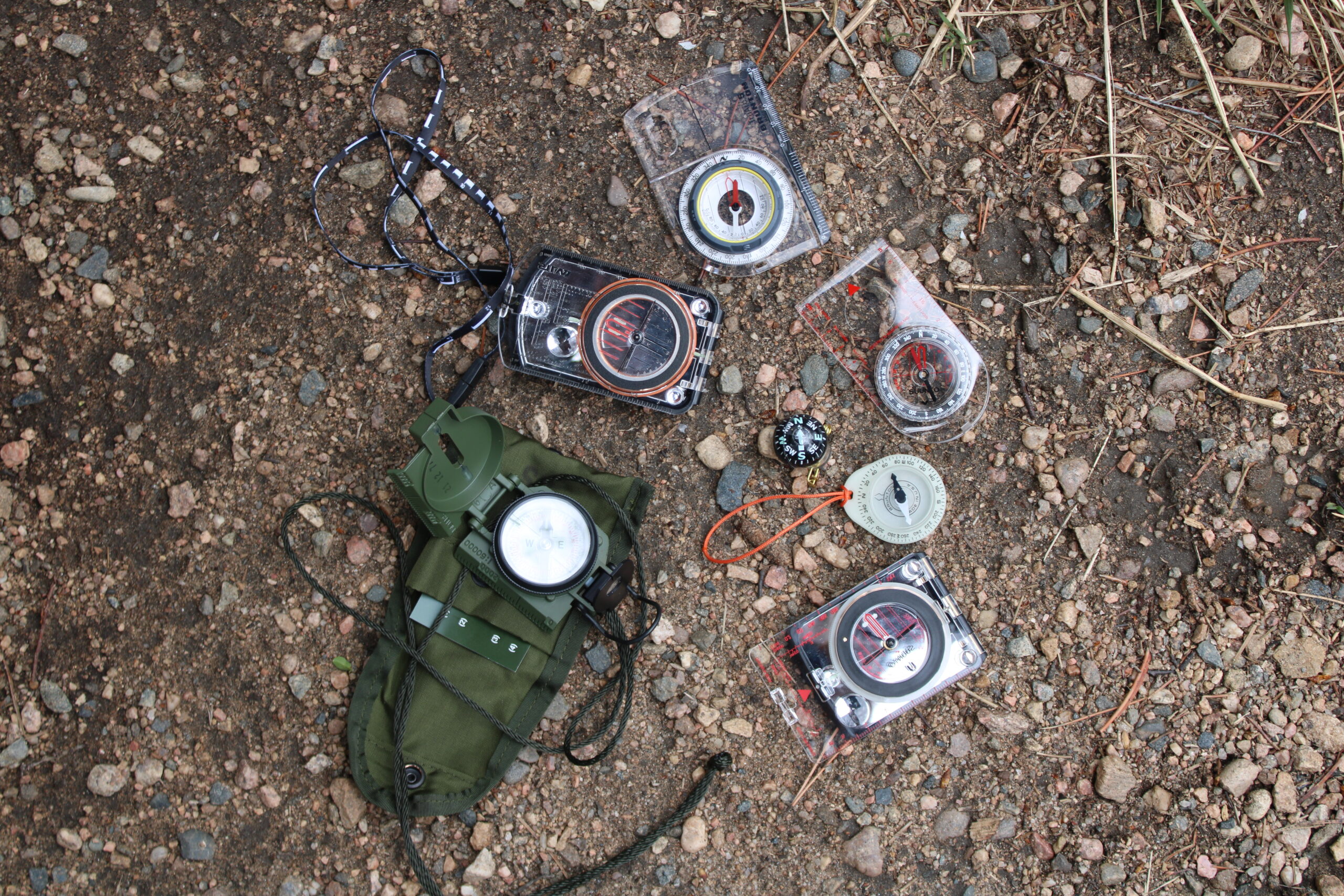
Truly understanding how to use a compass is key. It’s basic knowledge that, most simply, compasses will point you north, but there’s a lot more to that. To get started, here are three basic compass skills everyone should learn, which cover skills like setting your orientation. Also, for those looking to use a compass as a backup to new electronic devices, here’s how to use a compass if you are in the wilderness and the GPS you were relying on fails.
While almost all compasses work on a basic level, learning the skills of proper navigation can be a literal lifesaver in a time of need. Having the right compass may make a big difference. Spending extra money will not be a regret in a time of need.
Plus, the more tools that come with a compass, the more users will get out of it in the backcountry, whether that’s exploring new terrain or trying to get home quickly. Understanding your needs for a compass will help you find your way to the right tool to help in your adventures.
- Best Overall: Suunto MC-2
- Best for Hiking: Silva Ranger 2.0
- Best Military: Cammenga Military Compass
- Best for Kids: Brunton 9041 Glow Compass
- Best Land Nav: Suunto A-10
- Best Pin-On: Coghlan’s Ball-Type Pin-on Compass
- Best Budget: Brunton TruArc 5
